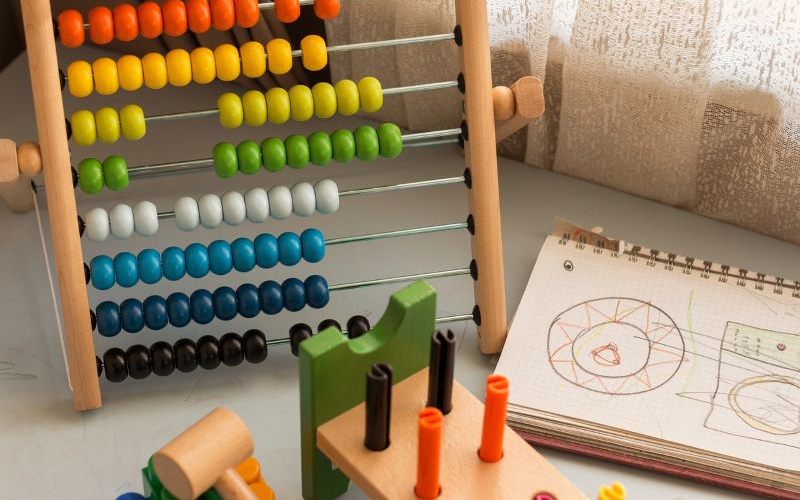Australians are obsessed with property. Collectively, Australia’s housing stock is worth more than $10 trillion, having surpassed the mark in mid-2022, briefly falling, then comfortably rising again through 2023 and 2024.
Melbourne and Sydney account for two thirds of that value. Two trillion dollars was added in 2021 alone, and new records are seemingly being hit every month across most capital cities.
These are the statistics you can use to prove whatever petty argument you want to settle with friends or family, compiled from the likes of the Reserve Bank of Australia (RBA) and the Australian Bureau of Statistics (ABS).
It's important to note, the ABS moved much of this data to a quarterly release, rather than monthly, in 2025.
Average home loan interest rates
The current average interest rate on variable owner occupier mortgages is 5.99% p.a.
-
Owner occupier variable rate home loans: 5.99% p.a.
-
Owner occupier fixed rate home loans (for fixed terms of 3 years or less): 5.69% p.a.
-
Owner occupier fixed rate home loans (for fixed terms of over 3 years): 6.30% p.a.
-
Investor variable rate home loans: 6.21% p.a.
-
Investor fixed rate home loans (for fixed terms of 3 years or less): 5.97% p.a.
-
Investor fixed rate home loans (for fixed terms of over 3 years): 6.78% p.a.
This includes average interest rates of new loans funded in the month. This is different from all outstanding loans as new loans provide a more acute month-by-month snapshot of what the market is doing.
Average home loan size
The current average new loan size for owner occupiers (including first home buyers) is $659,000 while investors borrow a touch more. First home buyers borrow $542,000 on average.
Average home loan amounts increased sharply through the Covid-19 pandemic. This is because of record low interest rates, extra government stimulus, government cash handouts, and fewer avenues to spend money due to lockdowns and closed international borders. Rather than pocket their savings on interest, Aussies generally use their increased borrowing power to purchase bigger and more expensive homes, and bid up the price of homes with other eager borrowers.
Buying a home or looking to refinance? The table below features home loans with some of the lowest interest rates on the market for owner occupiers.
| Lender | Home Loan | Interest Rate | Comparison Rate* | Monthly Repayment | Repayment type | Rate Type | Offset | Redraw | Ongoing Fees | Upfront Fees | Max LVR | Lump Sum Repayment | Extra Repayments | Split Loan Option | Tags | Features | Link | Compare | Promoted Product | Disclosure |
|---|---|---|---|---|---|---|---|---|---|---|---|---|---|---|---|---|---|---|---|---|
5.54% p.a. | 5.58% p.a. | $2,852 | Principal & Interest | Variable | $0 | $530 | 90% |
| Promoted | Disclosure | ||||||||||
5.49% p.a. | 5.40% p.a. | $2,836 | Principal & Interest | Variable | $0 | $0 | 80% |
| Promoted | Disclosure | ||||||||||
5.64% p.a. | 5.89% p.a. | $2,883 | Principal & Interest | Variable | $250 | $250 | 60% |
| Promoted | Disclosure | ||||||||||
5.64% p.a. | 5.89% p.a. | $2,883 | Principal & Interest | Variable | $248 | $350 | 60% |
| Disclosure |
Monthly home loan approvals
Find out how many owner occupiers versus investors are in the market on any given month. Compare how many are on P&I or interest only loans, and find out how many mortgages are on fixed versus variable terms.
Every month on average there are about 25,000 to 30,000 new owner occupier loan agreements, and 15,000 for investors. The number has cooled slightly since the RBA started increasing the cash rate in May 2022, but only when compared to record Covid-era numbers. Notwithstanding the pandemic period, people are still settling on home loans at record levels.
Owner Occupier vs Investor Numbers
Owner Occupier vs Investor Numbers - Ratio
Investor vs Owner Occupier Value
Popularity of fixed vs variable-rates
Note: The ABS discontinued this series after September 2024.
The share of new fixed-rate lending is at a record low of 2.59% as at September 2024. This contrasts with nearly half of all new home loans being fixed in mid-2021.
Percentage of monthly loan commitments on fixed rate
Housing credit growth
Credit growth measures the level of personal borrowing, and positive economic times generally corresponds to strong credit growth. The current annualised figure is 5.65% as an average of both owner occupiers and investors. This means the average level of credit, i.e. household debt in the system, is 5.65% higher than a year ago.
Recently, investors have done much of the heavy lifting in elevating growth levels, as evident in the charts.
Credit growth is not a 'flow' metric, like new lending figures are, rather a 'stock' metric as a measurement of the growth of existing housing debt in Australia.
These tables encompass monthly and annual growth in the value of outstanding home loan debt.
Monthly housing credit growth
Annual housing credit growth
Interest-only borrowing
The value of outstanding interest-only loans in the market is about $249 billion, compared to an overall mortgage market worth more than $5.3 trillion.
As interest rates lowered, the popularity of interest-only loans generally plummeted, because affording both principal and interest was made more doable. Restrictions to investment interest-only lending introduced in 2017 also caused the sector to crater.
Quarterly interest-only home loan approvals (value)
Existing interest-only home loans (value)
Refinancing - Values and Numbers
Owner occupiers externally refinanced more than $34.9 billion in the March 2025 quarter, down considerably from previous periods, suggesting the market stasis led by RBA cash rate stability has led to less incentive to change home loans.
External refers to refinancing with a new lender rather than asking for a better deal with your current one (internal).
Investors tend to refinance much bigger home loans.
Number of refinances
Value of refinances
Average value - internal and external combined
First home buyers
On average there are around 10,000 new first home buyers entering the market in any given month, borrowing on average $542,000. This is much less than other owner occupiers and investors.
In the early stages of the Covid-19 pandemic with home values falling slightly, there was a relative boom in loans written to first home buyers. However, as the scales tipped and home prices increased sharply, first home buyers generally struggled to compete at private treaties and auctions against other owner occupiers - and investors.
However the surging rental crisis since 2022 has caused many first home buyers to enter the market despite the hurdles of high prices and high interest rates, with elevated levels of first home buyers getting housing finance in 2024.
The number of first home buyers in the lending market.
The value of home loans made out to first home buyers.
Average first home buyer loan size
First home buyers tend to borrow less than other owner occupiers and investors. This is despite many tapping into the ‘Bank of Mum and Dad’ for help to put together a deposit. They borrowed an average of $542,000 in the March 2025 quarter - much less than the wider owner occupier cohort. The last time owner occupiers as a whole borrowed this little was March 2021.
Australian property prices
In general, Australian property prices are back rising after a brief dip during the back end of 2022. However, it's a bit misleading to talk about 'Australian property prices' and not differentiate between regions, as the pace of growth tends to contrast wildly between different cities/states.
In 2024 a significant reshuffling in the pecking order happened; Melbourne slipped ranks to be behind Brisbane, then later Perth, in the median dwelling value.
Perth, Adelaide, and Brisbane have experienced strong price growth, while Melbourne has flatlined, and the rate of growth in Sydney has slowed. Results are also mixed in Canberra and Hobart.
Photo by 2102033 on Pixabay
Article originally published April 2022.

Ready, Set, Buy!
Learn everything you need to know about buying property – from choosing the right property and home loan, to the purchasing process, tips to save money and more!
With bonus Q&A sheet and Crossword!





.jpg)

 Bea Garcia
Bea Garcia
 Denise Raward
Denise Raward
 Harry O'Sullivan
Harry O'Sullivan

 Harrison Astbury
Harrison Astbury

